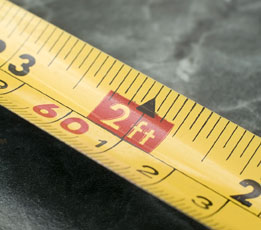Section 2
1. Section 2
1.31. Explore 3
Section 2: Slope—Rate of Change
Self-Check 2

Hemera/Thinkstock
When you are asked your height, do you answer in feet and inches or do you answer in metres and centimetres? Can you answer using both systems?
- Using proportions and the relationship of 1 m = 3.281 ft (rounded to the nearest thousandth), convert your height from
Try This 3
It took Bern Goosen 6 days, 3 hours, and 20 minutes to climb the 3885 m from the starting point of Rongai Route to Uhuru Peak, the summit of Mt. Kilimanjaro. The climb started on October 9, 2007, at 12:40 p.m. and ended on October 15 at 4:00 p.m.
- To the nearest hour, how much time did Bern spend on his climb?

- Use proportional reasoning to find the average number of metres climbed each hour. Round your answer to the nearest metre.

Use your favourite search engine and a guided search to find video footage of a person, or people, climbing Mt. Kilimanjaro by wheelchair. You will see how challenging this climb can be. Use the search terms “wheelchair Kilimanjaro climb.”
After viewing the video, do you have a better understanding of why Bern’s climbing rate was only 26 m/h?
The proportion you use might look something like this.
![]()
Try turning each time unit into hours.
6 days = ? h
3 h = 3 h
20 min = ? h
Then total the number of hours it took Bern to climb the mountain.